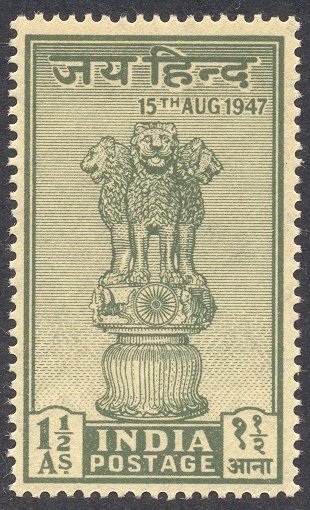
A Sufi story tells of a man who prayed continually for the awareness to succeed in life. Then one night he dreamt of going into the forest to attain understanding.
The next morning he went into the woods and wandered for several hours looking for some sign that would provide answers.
When he finally stopped to rest, he saw a fox with no legs lying between two rocks in a cool place. Curious as to how a legless fox could survive, he waited until sunset when he observed a lion come and lay meat before the fox.
“Ah, I understand,” the man thought. “The secret to success in life is to trust that God will take care of all my needs. I don’t need to provide for myself. All I have to do is totally surrender to my all-sustaining God.”
Two weeks later, weakened and starving, the man had another dream. In it, he heard a voice say, “Fool! Be like the lion, not the fox.”
Image: The Lion Capital of Asoka adorns the second stamp, issued on Dec. 15, 1947 in independent India. The State Emblem of India, or the official seal of the Government of India used as the national emblem appearing on official documents, currency and passports, is based on the Lion Capital of Ashoka.
The Lion Capital is a capital, or head, of a column erected by the Mauryan emperor Ashoka in Sarnath, India, c. 250 BCE. Its crowning features are four life-sized lions set back to back on a drum-shaped abacus. The side of the abacus is adorned with wheels in relief, and interspersing them, four animals, a lion, an elephant, a bull, and a galloping horse follow each other from right to left. A bell-shaped lotus forms the lowest member of the capital, and the whole column, 2.1 metres (7 ft) tall, is carved out of a single block of sandstone. Erected after Ashoka’s conversion to Buddhism, it commemorated the site of Gautama Buddha’s first sermon some two centuries before.
